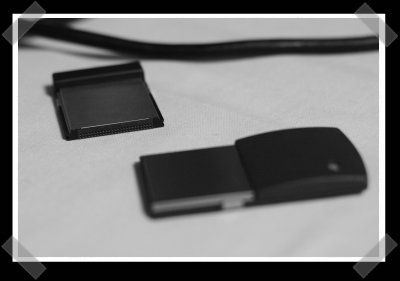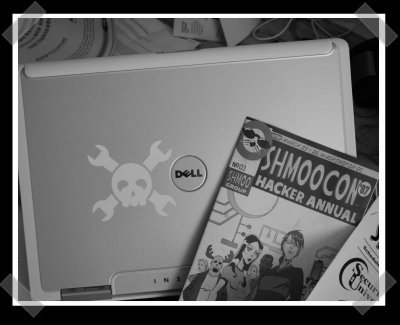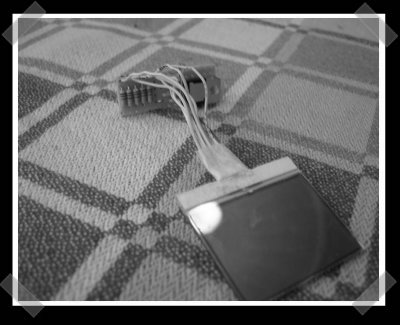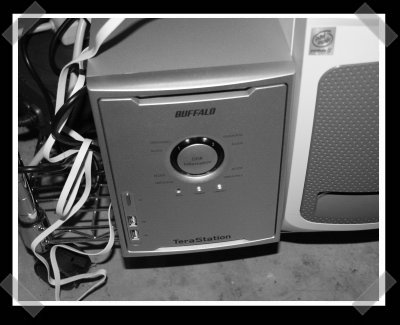
[Eliot] and I hit [Major Malfunction]’s talk about RFID hacking. He’s put together a set of python scripts to read – and write RFID tags. He demo’d cloning a few tags – along with someone’s implanted RFID that’s used to lock and unlock a laptop. (It looked like the reader in the kit from ThinkGeek.) He’s kind enough to offer a selection of hardware on his site. (The usb RFID reader is pretty cheap.) His work has made plenty of headlines, including slashdot, but you can get the actual details, code and hardware on his site.
Month: March 2007
Add Text To Speech To A Garmin C510/530 GPS

[josh] pointed out this hack for Garmin C510 and C530 GPS units. The newer C550 and C580’s feature text to speech directions. [Phil Hornby] put together a walk through that will add this valuable feature to the older units. He took advantage of the firmware similarities of the various Garmin units and got it working. The hack requires some compromises due to memory constraints, but it’s pretty straight forward.
Make Your Coffee With A Laser
[Mr Beam] sent this in yesterday, but I didn’t have a chance to get it up til now. These guys are using a 2Kw laser to heat up their instant coffee and tea. Sure, it’s not a hack, but [Eliot] wanted it up, and who doesn’t want their own 2Kw Laser?
New Bling For Shmoocon!

[Eliot] and I are in D.C. at Shmoocon for the weekend. We’re armed with the latest Hack-A-Day sticker. Find us here and we’ll hook you up. Right now we’re checking out [H1kari]’s talk on using FPGA’s for high speed encryption key cracking. By using dedicated FPGA hardware, they’re smoking dual core Intel’s left and right for the calculations. He also talked about an interesting application called VileFault – it takes in a certain fruit vendors encrypted FS and spits out a decrypted image – once you’ve cracked the pass phrase. (Guess what makes finding that key way faster.) Now he’s getting into brute forcing bluetooth pins…
[Update so I don’t run off the page…]
The con’s first round of talks was pretty interesting. I definitely enjoyed the keynote by [Aviel Rubin]. He discussed his teams efforts to crack the Exxon Mobil Speedpass, which happens to be the same technology that’s used to RF disable several newer cars. They used some FPGA in a similar manner as [H1kari] – to speedily decrypt the encryption keys. The defeat of the Speedpass is pretty old news, but it was heartening to hear how Johns Hopkins University stood behind his team and was happy to saddle up their lawyers in dealing with the release of their paper.
The boys over at team hack-a-day – our unofficial Folding@home team (#44851) asked me to remind people that the PS3 folding client has been released – give those spare cpu cycles a home! The team has their own forums that hold quite a few gems. Not the least of with is a handy DXF of the Hack-a-day (and team Hack-A-Day) logo.
Nokia LCD In A Laptop

I was poking around and ran across this interesting mod in progress. It’s mostly a study in customizing an old laptop, but embedding a Nokia LCD in the palm rest is an interesting little hack. The LCD was taken from a Nokia 3310 and modded to connect to the parallel port. (Probably with a circuit like this one)
Make A Small Coilgun (aka Coilosapien Update)

Remember the coilosapien? I hopped over and found that [marcus] wrote a tutorial on his mini coil gun. He beefed up a disposable camera charging circuit with some extra capacitors to drive the coil, and used a small servo for his automatic reload mechanism. Everything you need to arm your robots.
Bonus: Buffalo Terastation Hacking

Just a bonus hack in honor of my new toy: a 1GB 1TB buffalo Terastation NAS. These puppies run embedded Linux, and have a decent user base. Mine came with 128MB of ram, four Samsung drives (each with their own IDE bus), RAID support, gigabit ethernet, USB 2.0 and a Motorola Sandpoint cpu. (Putting it on par with my old Powermac 8500) The wiki has instructions for all the the basic hacks. Installing some hacked firmware was pretty easy, and yielded telnet and root access. It has a serial port for UPS control, but there’s a nice clean hack for enabling serial console access instead.











